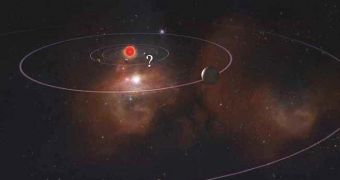Scientists have known for a long time that many types of stars can form planetary systems around themselves. Mostly, this is done from debris fields left behind after the stars themselves are formed, which are called protoplanetary disks. Unfortunately, it is also well known that the Milky Way is not exactly the most appropriate place for solar systems. Astronomers have hypothesized that not many stars and adjacent systems similar to our own exist, but, until now, no one knew a real number. Researchers have been recently able to conclude that about 15 percent of all stars in our galaxy have solar systems around.
This means that the number of potential twin systems similar to our own is at least in the hundred of thousands, if not in the millions. The Milky Way is estimated to be harboring anything between 100 and 400 billion stars, so, proportionally speaking, only a small number of worlds could exist around their respective stars. But the real challenge for astronomy is not finding exoplanetary systems, but space ensembles that feature planets the size of our own. Scientists believe that only smaller-sized planets can support life, as they are made of rock and heavy metals, rather than gas.
“Now we know our place in the Universe. Solar systems like our own are not rare, but we're not in the majority, either,” Scott Gaudi, who is an astronomer at the Ohio State University (OSU), explained. He was speaking yesterday in Washington DC, at the 215th meeting of the American Astronomical Society (AAS).
One of the factors that has contributed to the new estimates is the Microlensing Follow-up Network (MicroFUN) exoplanet survey, which has been going on for the last four years. The study only found one solar system similar to our own, featuring two planets the size of Jupiter and Saturn. “We've only found this one system, and we should have found about six by now, if every star had a solar system like Earth's,” Gaudi said.
He added that the survey was indeed incomplete, but said that the data collected thus far were enough to give astronomers an indication of just how many similar solar systems might exist in our galaxy. “While it is true that this initial determination is based on just one solar system and our final number could change a lot, this study shows that we can begin to make this measurement with the experiments we are doing today,” Gaudi revealed. “With billions of stars out there, even narrowing the odds to 15 percent leaves a few hundred million systems that might be like ours,” he concluded, quoted by Space.

 14 DAY TRIAL //
14 DAY TRIAL //